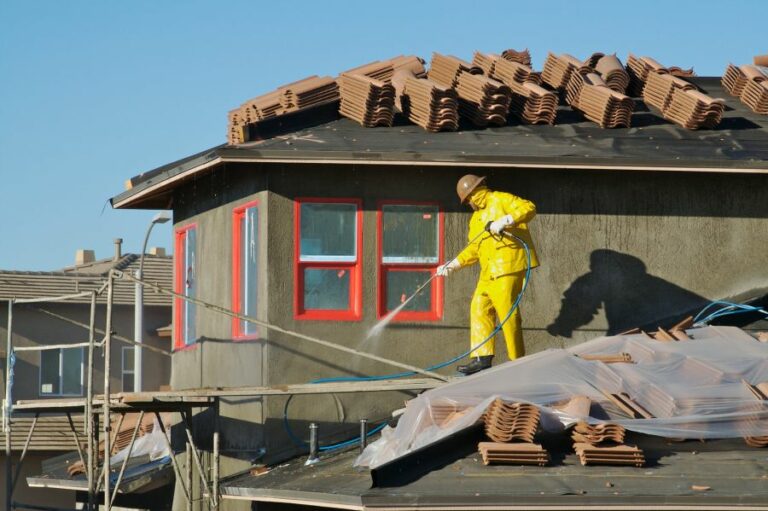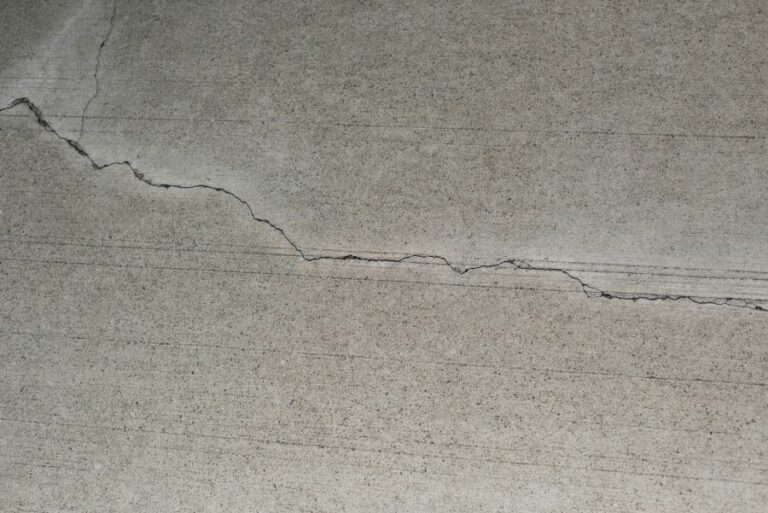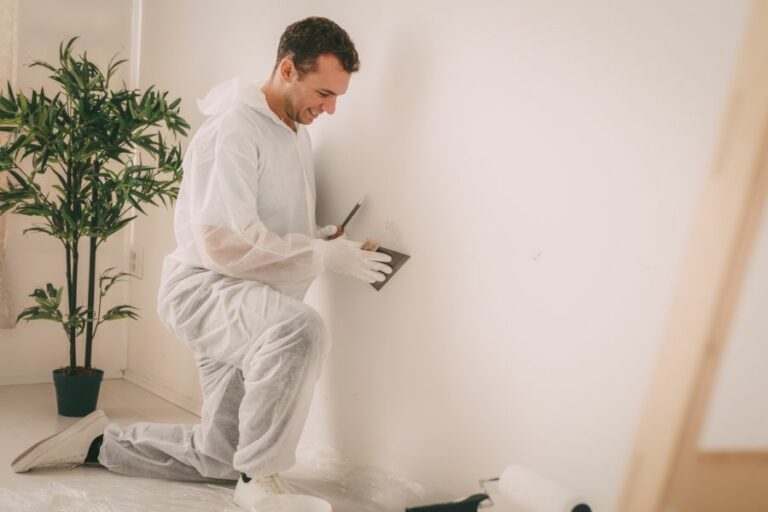How To Prepare Surfaces For Painting Projects, What Pros Say
Preparing surfaces for painting projects can seem daunting, but fear not! With the right steps and guidance, you can achieve a flawless finish that will make all the difference in your final results. We are here to share proven techniques and expert tips on preparing various surfaces for your painting endeavors.
How to prepare surfaces for painting projects:
First, to prepare surfaces for painting projects, clean the surface to remove dirt and debris. For wood surfaces, sand in the direction of the grain, repair any imperfections with wood filler, and apply a primer. Remove rust and sand lightly for metal surfaces, and apply a metal primer. For brick and masonry surfaces, repair cracks and apply a masonry primer. For drywall surfaces, sand lightly, repair imperfections, and apply a PVA primer.

Discover the secret to achieving flawless paintwork in our step-by-step guide on preparing surfaces for painting projects. Learn the importance of proper cleaning, patching, and priming techniques to ensure your paint job lasts. Read on to unveil expert tips and tricks to ace your next painting project!
Contents
Preparing Surfaces for a Flawless Painting Project
Proper surface preparation is an essential first step for any successful painting project. A well-prepared surface not only makes the painting process easier but also ensures long-lasting results.
• Importance of Surface Preparation
Surface preparation is crucial because it ensures the paint adheres properly to the surface, which prevents peeling and flaking. Additionally, it ensures that the surface is smooth and free of imperfections, allowing for an even and professional-looking finish.
To help you achieve the best possible results, I’ve broken down the preparation process based on the type of surfaces that you may encounter.
• Preparing Wood Surfaces
Wood surfaces are popular for painting projects, as they offer a natural and rustic charm. To prepare wood surfaces, follow these steps:
- Cleaning: Use a soft brush to remove any loose dirt, dust, or debris from the surface. If the wood is particularly dirty, clean it with a damp cloth and mild detergent. Allow the surface to dry completely before proceeding.
- Sanding: Sand the wood surface with medium-grit sandpaper (80-120 grit) to remove any rough spots or old paint. Sand in the direction of the wood grain for best results. For an even smoother finish, repeat the process with finer-grit sandpaper (180-220 grit).
- Repairing: If there are any holes, dents, or cracks in the wood, fill them with wood filler. Allow the filler to dry, and then sand the surface smooth.
- Priming: Apply a wood primer to the surface using a brush or roller, following the manufacturer’s instructions. Allow the primer to dry fully before applying paint.
• Preparing Metal Surfaces
Painting metal surfaces require additional preparation steps to ensure proper adhesion and protect the metal from corrosion. Here’s a step-by-step guide:
- Cleaning: Remove any grease, oil, or dirt from the surface using a cloth and a mild detergent. Be sure to thoroughly rinse the surface with water and allow it to dry completely.
- Removing Rust: If the metal surface has any rust, use a wire brush or sandpaper to remove it. For larger rust spots, a rust remover solution may be necessary. Follow the manufacturer’s instructions and ensure the surface is rust-free before proceeding.
- Sanding: Lightly sand the entire surface with medium-grit sandpaper (120-150 grit) to create a slightly rough surface that will allow the paint to adhere more effectively.
- Priming: Apply a metal primer to protect the surface from corrosion and provide a better surface for the paint to adhere to. Follow the manufacturer’s instructions and allow the primer to dry fully before applying paint.
• Preparing Brick and Masonry Surfaces
Brick and masonry surfaces can provide an attractive and durable finish when painted correctly. To prepare these surfaces for painting, follow these steps:
- Cleaning: Brush away any loose dirt, dust, or debris with a stiff-bristled brush. For more stubborn dirt or stains, a power washer or scrubbing with a solution of trisodium phosphate (TSP) and water may be necessary. Rinse thoroughly with water and allow the surface to dry for at least 24 hours before proceeding.
- Repairing: Inspect the surface for any cracks or gaps, and repair them using a masonry repair product or mortar. Allow the repair material to dry completely before continuing.
- Priming: Apply a masonry primer to the surface using a brush or roller, following the manufacturer’s instructions. This will help seal the surface and provide better adhesion for the paint. Allow the primer to dry fully before applying paint.
• Preparing Drywall Surfaces
Drywall surfaces are common in interior spaces and require proper preparation to ensure a smooth, even finish. Here are the steps to prepare drywall for painting:
- Cleaning: Wipe down the surface with a soft cloth or sponge to remove any dust or dirt. If there are any grease or oil stains, clean the surface with a mild detergent and water, then rinse thoroughly and allow it to dry.
- Sanding: Lightly sand the surface with fine-grit sandpaper (150-180 grit) to remove any minor imperfections and ensure proper paint adhesion.
- Repairing: If there are any holes, dents, or cracks in the drywall, repair them using a joint compound or a pre-made patch. Allow the repair material to dry, and then sand the surface smoothly.
- Priming: Apply a PVA primer to the drywall surface to seal the surface and ensure better paint adhesion. Follow the manufacturer’s instructions and allow the primer to dry fully before applying paint.
• Final Thoughts
Regardless of the surface type, proper preparation is essential for a successful painting project. By following these steps, you can ensure a smooth, even finish that will last for years to come.
For more information on surface preparation, visit the U.S. General Services Administration’s guide on preparing surfaces for painting.
Step | Description |
|---|---|
1. Clean the surface | Remove dirt, grease, and other contaminants from the surface to ensure proper paint adhesion. |
2. Remove loose or peeling paint | Use a scraper or wire brush to remove any loose or peeling paint from the surface. |
3. Repair any damage | Fill any holes, cracks or dents with a suitable filler, and then sand the area smooth. |
4. Sand the surface | Using fine-grit sandpaper, sand the entire surface to create a smooth, even base for the new paint. |
5. Prime the surface (if needed) | Apply a coat of primer to the surface, particularly if it is porous, stained, or if you are making a significant color change. |
6. Tape off surrounding areas | Use painter’s tape to protect any adjacent surfaces, such as trim, windows, and light fixtures, from accidental paint splatters. |
The Ultimate 9-Step Guide for Surface Preparation
Surface preparation is an essential process in any painting or coating project. Properly preparing a surface ensures the longevity of the applied coating and prevents any paint or coating failure.
• 1. Assess the Surface Condition
Before beginning any surface preparation, take the time to assess the condition of the surface. Look for any visible defects, such as cracks, corrosion, or other forms of damage. Determining the extent of these issues will guide the rest of the preparation process.
• 2. Remove Contaminants
The next step involves removing any contaminants from the surface. Typical contaminants include dirt, grease, oil, and dust. These can often be removed using a combination of degreasing agents, soaps, and warm water.
For tougher stains, a concentrated cleaner may be necessary. The EPA provides guidelines for environmentally safe cleaning solutions.
• 3. Remove Old Paint or Coating
If the surface has an old layer of paint or coating, it must be removed before applying a new layer. This can be done using a variety of methods, such as manual scraping, sanding, or chemical stripping. I recommend using a combination of these methods for the best results.
• 4. Repair Surface Defects
After removing contaminants and old paint, repair any noticeable surface defects. Depending on the extent of the damage, this may include patching holes and cracks, smoothing rough areas, and replacing severely damaged sections of material.
• 5. Sand the Surface
Sanding the surface is crucial for promoting adhesion between the surface and the new coating. It will help remove any remaining debris, as well as create a rough surface better suited for the paint to stick.
Be sure to start with a coarse grit sandpaper and work your way to a finer grit for the smoothest finish.
• 6. Remove Dust and Debris
Before moving on to the next step, ensure all dust and debris generated by sanding have been removed. This can be done using a vacuum, dry brush, or a tack cloth.
• 7. Apply Primer or Surface Treatment
Certain surfaces may require a primer or surface treatment before the application of a new coating. Primers help promote adhesion and can provide additional protection against corrosion.
Be sure to choose the appropriate primer for your surface and follow the manufacturer’s recommendations for application.
• 8. Mask Off Adjacent Areas
Before beginning the application of your paint or coating, be sure to mask off any adjacent areas that should not be painted. This includes window sills, doors, hardware, and other fixtures.
• 9. Surface Monitoring
After completing all the steps mentioned above, make sure to continuously monitor the surface. This includes checking for proper moisture levels, temperature, and any contaminants that could affect the success of the final coating.
By following these nine steps, you will ensure a professional-level finish for your painting or coating project. Proper surface preparation is the key to success and will help prevent future issues, such as coating failure or premature wear.
Step No. | Step Description |
|---|---|
1 | Remove all loose material from the surface (dirt, dust, grease, etc.) |
2 | Assess the surface condition for any damage or defects |
3 | Repair any cracks, holes, or other defects in the surface |
4 | Hand or power tool clean the surface to remove any loose paint, rust, or other contaminants |
5 | Apply a suitable primer, if required, to improve adhesion and prevent corrosion |
6 | Allow the primer to dry according to the manufacturer’s instructions |
7 | Sand the surface to create a smooth, even finish |
8 | Remove dust and debris from the surface using a tack cloth or vacuum cleaner |
9 | Apply the desired coating, making sure to follow the manufacturer’s instructions for application and drying times |
Essential Steps to Get a Room Ready for Painting
Preparing a space for painting is a crucial step for achieving a professional-looking result. A well-prepped space can make the painting process smoother and more efficient and ensure that the final product is both aesthetically pleasing and durable.
• Assess the Surface Condition
Before starting any painting project, it’s important to assess the condition of the surfaces that will be painted. Look for any cracks, holes, or other imperfections that may need repairs.
In addition, check for surface contaminants such as grease, dirt, or mildew, as they can interfere with paint adhesion. Consider taking photos of the areas that need attention so that you can reference them throughout the project.
The US Environmental Protection Agency provides guidelines on dealing with lead paint, a common issue in older homes. Be sure to consult these guidelines if you suspect your surfaces may contain lead paint.
• Remove Furniture and Protect Flooring
Before you begin painting, it is essential to clear the space of any furniture, decorations, or other items that could be damaged by paint. If it is not possible to remove all items, move them to the center of the room and cover them with plastic sheeting or drop cloths.
Protect your floors by laying down drop cloths or plastic sheeting and securing the edges with painter’s tape. This will prevent paint from damaging your flooring and make cleanup easier once the project is complete.
• Clean the Surfaces
Thoroughly cleaning the surfaces to be painted is crucial for proper paint adhesion and a smooth, long-lasting finish. Start by dusting or vacuuming surfaces to remove loose dirt and debris. Afterward, use a mild detergent and water solution to wash the surfaces, removing any grease or grime.
In cases of mildew or mold, a solution of bleach and water can be used, following the manufacturer’s recommendations for dilution. Rinse surfaces thoroughly with water and allow them to dry completely before moving on to the next step.
• Repair Imperfections
Fill any cracks, nail holes, or other surface imperfections using a suitable patching compound or filler, following the manufacturer’s directions.
Once the filler has dried, sand the area smoothly, being careful not to create any additional damage. Wipe away any dust from sanding with a damp cloth, and let the surface dry completely.
• Remove or Protect Hardware and Fixtures
To avoid paint splatters on hardware or fixtures, it’s best to remove them or, at the very least, cover them with painter’s tape. Door handles, cabinet knobs, and light switches can all be easily removed with a screwdriver.
For items that cannot be removed, such as outlets or permanent fixtures, use painter’s tape to protect their edges.
• Caulk Gaps and Seams
Caulking gaps or seams help create a clean, professional finish and prevent drafts or moisture from penetrating your painted surfaces. Use a paintable caulk and a caulking gun to fill gaps around windows, doors, trim, or baseboards.
Make sure to smooth the bead of caulk with a wet finger or damp cloth, removing any excess material. Allow the caulk to cure according to the manufacturer’s recommendations before painting.
• Sand and Prime Surfaces
Sanding surfaces before painting will help to ensure proper paint adhesion and a smooth finish. Use a fine-grit sandpaper or sanding block to lightly sand the surfaces, paying special attention to any previously patched areas.
After sanding, wipe away any dust with a damp cloth and allow the surface to dry completely.
Applying a coat of primer is especially important when painting over a dark or glossy surface, as it will help the new paint to adhere properly and provide a consistent, even finish.
Use a brush or roller to apply the primer, following the manufacturer’s directions and ensuring full coverage of the surfaces. Allow the primer to dry completely before moving on to painting.
• Choose Quality Paint and Supplies
Investing in high-quality paint and painting supplies will make a noticeable difference in the final result of your project. Look for a paint that has good coverage and durability, such as an acrylic latex formulation.
Additionally, purchasing quality brushes, rollers, and painting tools will provide a smoother application and reduce the likelihood of shedding fibers or leaving behind visible brush strokes.
• Conclusion
Preparing a space for painting is a vital step in achieving a professional, lasting finish. By following this comprehensive guide, you can confidently transform your space, knowing that your efforts will result in a beautiful, well-executed paint job.
Is Sanding Necessary Before Applying Paint?
Proper surface preparation is essential for achieving professional-looking results when painting any surface. One of the most important steps in the process is sanding the surface before applying paint.
• Importance of Sanding Before Painting
Sanding a surface before painting is crucial for several reasons. First and foremost, it ensures proper adhesion of the paint to the surface.
Smooth surfaces may cause the paint to peel, bubble, or chip after a short period, impacting the overall appearance and durability of the finish. Sanding also helps to create a consistent surface texture, which aids in stain and paint application.
Additionally, sanding can help remove imperfections such as scratches, dents, and uneven areas on the surface. This will provide a clean, smooth, and uniform finish once the painting is complete.
• Types of Surfaces That Require Sanding
Various surfaces require sanding before painting, including:
- Wood: Wood surfaces need sanding to remove surface imperfections, eliminate splinters, and improve adhesion. Unfinished or raw wood surfaces should be sanded to ensure smoothness and evenness. Even previously painted or finished wood surfaces should be sanded lightly to aid in adherence and remove any loose paint or finish.
- Drywall: Joint compound used to cover seams and nail holes in drywall can create an uneven surface. Sanding before painting will smooth these areas and ensure a seamless finish.
- Metal: Paint does not adhere well to smooth metal surfaces. Therefore, it’s essential to sand metal surfaces before painting to create a slightly rough texture for the paint to grip.
- Existing Paint: When repainting a surface, it’s vital to check the current paint’s state. If it’s peeling, chipping, or flaking, remove these loose areas and sand the surface to create a smooth and even base for the new paint.
• Sanding Techniques for Different Surfaces
When sanding a surface before painting, it’s crucial to use the right sanding technique and appropriate tools for optimal results. Below are some recommendations for sanding different surfaces:
– Wood Surfaces
When sanding wood, start with coarse-grit sandpaper (60-80 grit) to remove significant imperfections or high spots. Then, use medium-grit sandpaper (100-120 grit) to smooth the surface further, and finish with fine-grit sandpaper (180-220 grit) for a smooth, even surface.
Always sand in the direction of the wood grain to avoid scratches or cross-grain marks.
– Drywall Surfaces
For sanding joint compounds on drywall, use fine-grit sandpaper (120-150 grit) or a sanding sponge. Hold the sanding block or sponge flat against the surface and use a light, circular motion to feather the edges of the compound for a smooth transition.
Be cautious not to oversand or damage the drywall’s surface paper.
– Metal Surfaces
Using a medium-grit sandpaper (80-120 grit) or a sanding block, scratch the metal surface to create a texture that paint can adhere to effectively. Wipe the surface clean with a damp cloth after sanding to remove any dust or debris.
– Existing Painted Surfaces
For previously painted surfaces, use medium-grit sandpaper (100-120 grit) to remove any loose or peeling paint. Once the loose paint is removed, lightly sand the entire surface with fine-grit sandpaper (180-220 grit) to create an even surface and promote adhesion.
• Safety Precautions during Sanding
Sanding can release particles that could be hazardous if inhaled. Always wear a dust mask or respirator, along with safety glasses to protect the eyes from dust and debris.
If a surface was painted before 1978, it might contain lead-based paint. In such cases, it’s crucial to take extra precautions and use a certified lead-safe approach, as detailed by the United States Environmental Protection Agency (EPA).
• Conclusion
In conclusion, sanding a surface before painting is an essential step to ensure proper paint adhesion, smoothness, and uniform appearance.
By using the correct sanding technique and tools, you can achieve professional and long-lasting painting results on a variety of surfaces. Always follow safety precautions during the sanding process to protect yourself from any dust and debris.
Surface Material | Answer |
|---|---|
Wood | Yes, it is recommended to sand the surface to ensure proper adhesion and a smooth finish. |
Metal | Yes, sanding is important to remove any rust or existing paint and to create a rough surface for better paint adherence. |
Plastic | It depends on the type of paint and surface condition. Sanding can help improve adhesion and create a smoother finish. |
Walls (Drywall or Plaster) | In most cases, it is not necessary to sand the entire surface. However, sanding is necessary to fix any imperfections, such as peeling paint or patched areas, to ensure a smooth finish. |







